A. Covello, L. E. Marcucci, S. Rosati, I. Bombaci9789812707703, 9812707700
Table of contents :
CONTENTS……Page 8
Preface……Page 6
In Memory of Adelchi Fabrocini……Page 14
Remembering Professor Adelchi Fabrocini S. Rosati……Page 16
1. Introduction……Page 20
2. Quantum liquids and cold atoms……Page 23
3. Correlated basis function theory of nuclear matter……Page 26
4. Correlated basis functions for finite nuclei……Page 28
References……Page 29
Few-Nucleon Systems……Page 32
1. Introduction……Page 34
2. Relativistic Hamiltonian Dynamics……Page 35
3. Relativistic approaches for few-body systems in Padoa……Page 36
4. The Hyperspherical Harmonics approach and its applications: the research activity in Pisa……Page 39
5 . A=3,4 nuclei and the Lorentz Integral Transform in Trento……Page 45
6 . Trinucleon electromagnetic form factors in the Light-Front Hamiltonian Dynamics: the Rome approach……Page 49
7. Conclusions and perspectives……Page 51
References……Page 52
1. Introduction……Page 54
2. Hyperspherical Adiabatic method……Page 55
3. Scattering observable calculations……Page 56
4. Results……Page 58
5. Conclusions……Page 59
References……Page 61
1. Relativistic quantum mechanics……Page 62
2. Bakamjian-Thomas mass operator……Page 63
3. Low-energy power counting……Page 64
4. Leading order results……Page 66
References……Page 68
1. Introduction……Page 70
2. The two-nucleon sector……Page 71
3. More complex few-nucleon systems……Page 73
References……Page 76
1. Introduction……Page 78
2. The Hyperspherical Harmonic Method……Page 81
3. Results and Conclusions……Page 82
References……Page 85
Nuclear Matter and Nuclear Dynamics……Page 86
1. Introduction……Page 88
2. Many-body theory of EOS……Page 89
3. Dependence on the Two and three-body forces……Page 97
4.1. Compressibility above saturation……Page 101
4.2. Symmetry energy……Page 104
4.3. Finite temperature EOS……Page 108
References……Page 109
1. Introduction……Page 112
2. Method……Page 114
3. Interaction……Page 115
4. Results……Page 116
References……Page 118
Nuclear Structure……Page 120
1. Introduction……Page 122
2. Realistic Nucleon-Nucleon potentials in nuclear structure……Page 123
2.1. Perturbative approach: Vlow–k……Page 124
2.2. The Correlated Basis Functions approach……Page 126
3.1. Random Phase Approximation……Page 127
3.2.1. Direct extensions of the RPA……Page 130
3.2.2. Boson expansion techniques……Page 131
3.2.3. Algebraic models……Page 132
3.2.4. The Quasi-particle Phonon Model……Page 133
4. A fully microscopic treatment of collective excitations……Page 135
References……Page 136
1. Introduction……Page 140
2. Brief outline of the method……Page 141
3. A numerical illustrative application of the method for l80……Page 143
Acknowledgements……Page 146
References……Page 147
1. Introduction……Page 148
2. The momentum distributions……Page 150
3. The spectroscopic factors……Page 152
4. Summary and Conclusions……Page 153
AKNOWLEDGMENTS:……Page 154
References……Page 155
Unbound Exotic Nuclei Studied by Projectile Fragmentation G. Blanchon, A. Bonaccorso, A. Garcia- Camacho, D.M. Brink, and N. Vinh Mau……Page 156
1. Introduction……Page 157
2. Projectile Fragmentation……Page 158
2.1. Inelastic excitation to the continuum…….Page 159
3.1. The reaction 11Be + n+10Be……Page 160
3.2. Structure of I4Be and I4B……Page 161
References……Page 163
1. Introduction……Page 164
2. Outline of calculations……Page 165
3. Results……Page 166
4. Summary……Page 170
References……Page 171
1. Introduction……Page 172
3. Pairing gap in coordinate space……Page 173
References……Page 179
Nuclear Astrophysics……Page 180
2. The inner crust of neutron stars……Page 182
3.1. Hyperonic stars……Page 189
3.2. Quark stars……Page 191
4.1. Mass-radius relation……Page 196
4.3. Gravitational waves……Page 197
References……Page 199
1. Introduction……Page 202
2. The Neutron star structure……Page 203
3. Hartree-Fock-Bogoliubov equations……Page 204
4. Results……Page 206
References……Page 209
1. Introduction……Page 210
2. Quiescent times in the GRBs prompt emission……Page 211
3. Phase transitions between QCD phases……Page 214
4. Conclusions……Page 216
References……Page 217
1. Introduction……Page 218
2. A static model for PNS……Page 219
3. Hadron-quark phase transition……Page 221
4. Structure and stability……Page 223
References……Page 225
1. Introduction……Page 226
2. Fluidodynamics equations of the conversion process……Page 227
3. Deflagration or detonation……Page 228
4. Hydrodynamical instabilities……Page 229
6. Conclusions……Page 231
References……Page 233
Nuclear Physics with Electroweak Probes……Page 234
1. Introduction……Page 236
2. Electron-Nucleus and Neutrino-Nucleus Scattering……Page 237
2.1. Random Phase Approximation……Page 238
2.2. Nuclear Eflects and FSI in the Quasielastic Region……Page 239
3. Two-Body Weak Axial Current……Page 246
4. Scaling and Superscaling in Lepton-Nucleus Scattering……Page 247
5. Electromagnetic Reactions on Few-Nucleons Systems……Page 249
6. Electromagnetic Reactions on Complex Nuclei……Page 252
References……Page 253
1. Introduction……Page 256
2. Theoretical Overview……Page 257
3. Result……Page 258
4. Conclusion……Page 262
References……Page 263
1. Introduction……Page 264
2. Superscaling beyond RFG model……Page 265
3. Superscaling predictions……Page 268
References……Page 271
1. Introduction……Page 272
2. PV asymmetry in inclusive electron scattering on nuclei……Page 274
3. The quasi-elastic neutrino-nucleus scattering……Page 276
References……Page 279
Structure of Hadrons and Hadronic Matter……Page 280
1. Introduction……Page 282
2. Properties of the nucleon……Page 283
2.1. The spectrum……Page 284
2.2.1. The elastic form factors……Page 286
2.2.2. Tame-like form factors……Page 287
2.2.3. The electromagnetic transitions……Page 289
2.3. Interlude……Page 290
3.1. Nucleon structure functions……Page 292
3.2 Generaaliaed Parton Distributions……Page 293
3.3. Drell- Yan processes……Page 296
4. Quark-antiquark and/or meson cloud effects……Page 297
References……Page 300
1. Introduction……Page 304
2. The chiral regime in the IILM……Page 305
3. Pion and nucleon mass in the IILM……Page 307
4. Instanton-induced dynamics in the chiral regime……Page 309
References……Page 311
1. Introduction……Page 312
2. The Model……Page 313
3. Phenomenological approximations……Page 316
4. Results and perspectives……Page 317
References……Page 319
1. Introduction……Page 320
2. The electromagnetic current……Page 321
3. Summary and conclusion……Page 324
References……Page 325
1. Introduction……Page 328
2. The Overlap Representation……Page 330
3. Results……Page 331
4. The Forward Limit……Page 332
5 . The Double Transverse-Spin Asymmetry……Page 333
References……Page 334
1. Introduction……Page 336
2. Degrees of freedom……Page 337
3. Flux-tube breaking model……Page 338
5. Preliminary results……Page 341
References……Page 343
1. Introduction……Page 344
2. The classification of tetraquark states……Page 345
References……Page 347
Quark-Gluon Plasma and Relativistic Heavy Ion Collisions……Page 350
Quark-Gluon Plasma and Relativistic Heavy Ion Collisions M. Nardi……Page 11
1. Introduction……Page 352
2. Statistical hadron production……Page 354
2.2. Production of of multiply heavy-flavored hadrons……Page 357
3. Kinetic description of the phase transition……Page 359
4. J suppression……Page 360
4.1. J suppression and strangeness enhancement……Page 362
4.2. New insights on J suppression……Page 363
5. Exotic particles at RHIC and LHC……Page 365
6. Particle correlations……Page 366
References……Page 370
1. Introduction……Page 372
2. The model……Page 373
3. Results……Page 375
4. Conclusions……Page 378
References……Page 379
Experimental Nuclear Physics in Italy……Page 380
1. Introduction……Page 382
2.1. EXCYT……Page 383
3. Experimental nuclear physics at LNS……Page 385
4.1. CATANA……Page 391
4.2. LA NDIS……Page 392
5. NEMO……Page 393
References……Page 395
Nuclear Structure at the Legnaro National Laboratories: From High Intensity Stable to Radioactive Nuclear Beams G. De Angelis……Page 396
1. Introduction……Page 397
1.1. The EURISOL Project……Page 398
2. LNL future perspectives: from high intensity to radioactive nuclear beams……Page 399
2.2. The mid-term Is01 facility SPES……Page 400
3. Nuclear Structure with (high intensity) stable ion beams……Page 401
3.1. Exploring the changing of shell structure of neutron rich nuclei……Page 402
3.2. Exploring Coulomb effects in N=Z nuclei……Page 408
References……Page 412
1. Introduction……Page 414
2. Quark and hadron dynamics……Page 415
3. Phase transitions of hadronic matter……Page 417
4. Nuclear structure and reaction dynamics……Page 419
5. Nuclear Astrophysics and Interdisciplinary research……Page 423
6. Conclusion……Page 425
Author Index……Page 426
List of Participants……Page 428
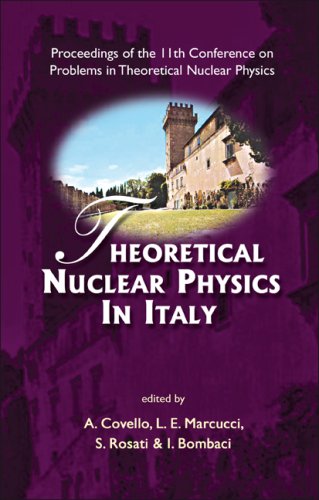
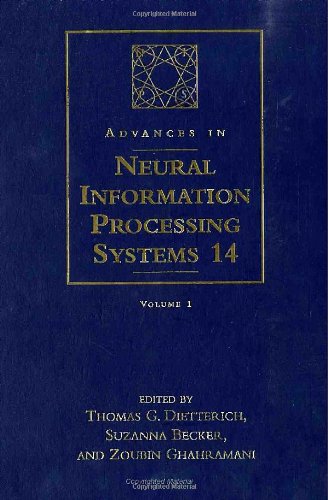

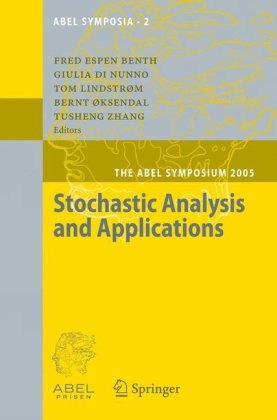
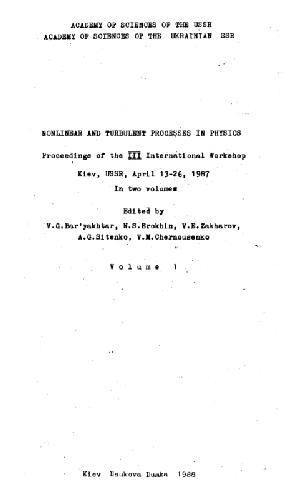
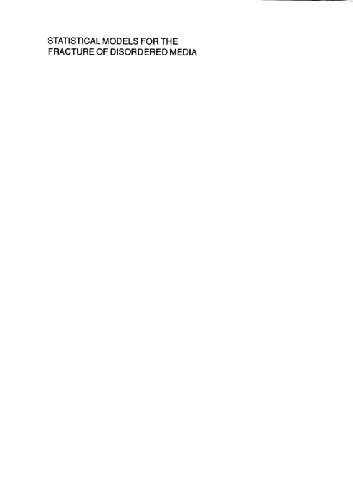

Reviews
There are no reviews yet.